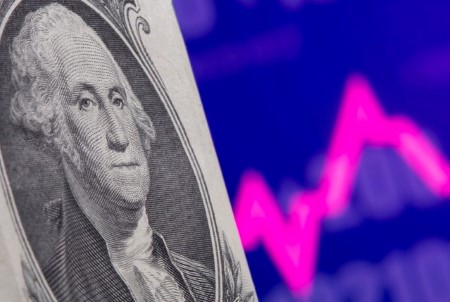




Policy Rate Updates: Double cut finale
 DOWNLOAD
DOWNLOAD

Monthly Economic Update: One for the road
 DOWNLOAD
DOWNLOAD

Inflation Update: Still low, still slow
 DOWNLOAD
DOWNLOAD


US yields narrowly mixed ahead of inflation data

NEW YORK, Jan 10 – US Treasury yields were mixed, with those on the shorter end of the curve slightly lower on Wednesday, as investors priced in a consumer price index (CPI) report that could show declining inflation, moving the Federal Reserve closer to the end of its tightening cycle.
A mixed to decent US 10-year note auction added to Treasury bids and briefly weighed on prices. The US Treasury will next auction USD 21 billion in 30-year bonds on Thursday.
But the main focus is the December CPI data due on Thursday, which will shed further light on when the Fed could start cutting rates. US producer prices will be released on Friday.
US core CPI is forecast to remain unchanged at 0.3% from the month before, while the year-on-year number is seen rising at a lower-than-expected pace of 3.8% from November, a Reuters poll showed. Headline CPI for the month is forecast to climb 0.2%.
“Everyone is waiting for CPI tomorrow (Thursday), which should set up the next wave of Fed commentary,” said Will Compernolle, macro strategist at FHN Financial in New York. “So I see the moves in Treasuries as pre-CPI positioning.”
He said core inflation of 0.3% is on the high side, which he believes could push out expectations for the first rate cut from March to May.
On Wednesday, however, the US rate futures market has priced in a nearly 68% chance of a rate cut in March, according to LSEG’s rate probability app. For 2024, traders are betting on about five rate cuts of 25 basis points (bps) each, putting the year-end fed funds rate at nearly 4%.
“We think that the start of the rate-cutting cycle in March is realistic, a view that we’ve held since October. It all comes down to the inflation data,” said Zachary Griffiths, senior investment grade strategist at CreditSights in Charlotte, North Carolina.
“The recent trend is still supportive of inflation moving lower throughout 2024. It comes down to the idea of the Fed not wanting to incrementally tighten the real policy rate by leaving the nominal policy rate steady as inflation comes down,” he added.
In afternoon trading, the benchmark 10-year yield rose 1.9 bps to 4.034%.
The US 10-year note auction showed a high yield of 4.024%, modestly higher than the market’s forecast of around 4.19%, suggesting investors demanded a slight premium.
Bids totaled USD 94.8 billion for a 2.56 bid-to-cover ratio, a gauge of demand, higher than last month’s 2.53 and the 2.48 average. It ties for the best since February, according to Action Economics.
Indirect bidders, which include foreign central banks, took down 66.1% of supply, higher than the 63.8% last month.
“Ten-year demand seems to be pretty solid,” said CreditSights’ Griffiths. “It doesn’t seem that we’re headed back to 5% in yield any time soon as indicated by the 10-year demand today.”
In other maturities, US 30-year bond yields were up 1.5 bps at 4.198%.
On the shorter end of the curve, the two-year yield was little changed at 4.366%.
A closely tracked US yield curve metric, showing the gap in yields between two- and 10-year notes steepened or narrowed its inversion to minus 33.9 bps on Wednesday. An inverted yield curve typically predicts an incoming recession.
This part of the curve, which has been inverted since July 2022, has been on a steepening trend over the last few months, suggesting investors are pricing the end of the Fed’s rate-hiking cycle.
(Reporting by Gertrude Chavez-Dreyfuss; Editing by Will Dunham and Richard Chang)
This article originally appeared on reuters.com





 By Reuters
By Reuters